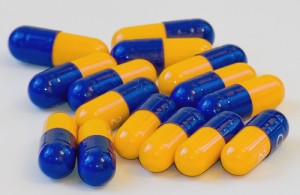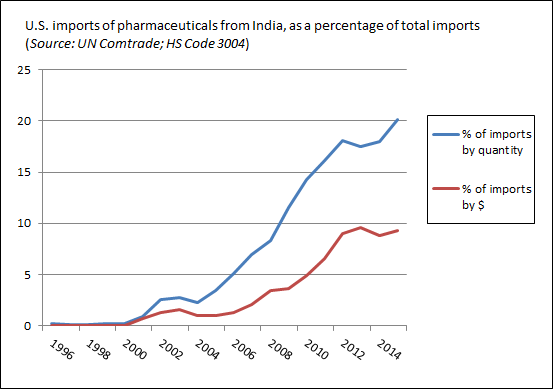 India is often called the “pharmacy of the developing world” because its pharmaceutical firms provide a large portion of the generic drugs consumed in the South. However, Northern countries are increasingly importing Indian drugs as well, as high prices have led to greater generic uptake.
India is often called the “pharmacy of the developing world” because its pharmaceutical firms provide a large portion of the generic drugs consumed in the South. However, Northern countries are increasingly importing Indian drugs as well, as high prices have led to greater generic uptake.
As an example, the United States has greatly expanded the amount of medicines it buys from India.
UN Comtrade data shows that last year, 20% of U.S. pharmaceutical imports by quantity came from India, up from a negligible 0.002% in 1996. The unit of measurement is kilograms of “Medicaments … consisting of mixed or unmixed products for therapeutic or prophylactic uses, put up in measured doses (including those in the form of transdermal administration systems) or in forms or packings for retail sale.” The share of imports from India as measured by dollar value is only 9%, indicating that these are relatively low cost imports.
The data is not something one can break down, but it shows an unambiguous increasing trend. It supports other stories of the growing presence of Indian generics in the U.S. market, such as the Wall Street Journal story reporting that a fifth of generic sales in the U.S. are from Indian firms.
And the overall trend is likely to continue. The Organization of Pharmaceutical Producers in India notes that between 2011 and 2014, the U.S. FDA granted the same number of generic Abbreviated New Drug Approvals to Indian and American firms.





